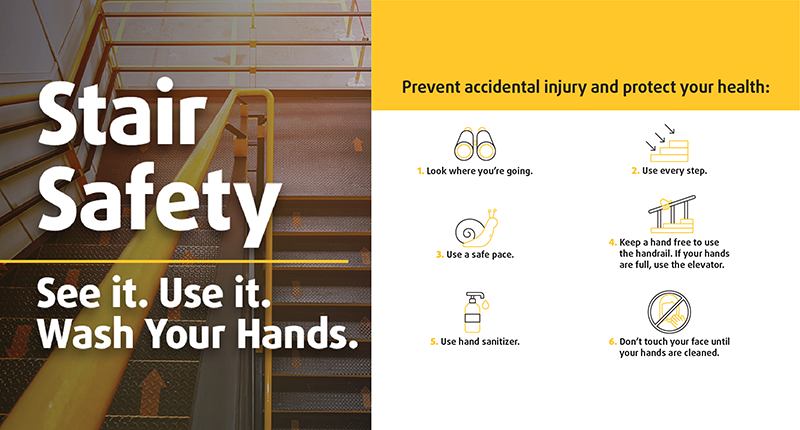The following was published on May 21, 2020 as a LinkedIn blog post by Melissa Kirkland, Americas EH&S Leader, Trinseo.


Melissa Kirkland, Americas EH&S Leader
At Trinseo, commitment to safety is part of our core values and an intrinsic element of our culture.
Our Environmental, Health & Safety (EH&S) team works to reinforce and improve safety practices through initiatives like Safety on Purpose, our behavioral safety program, and the Triple Zero Awards, given to sites that achieve zero recordable injuries, reportable spills or process safety incidents. In 2019, 77% of our sites received Triple Zero designations.
Because of our collective focus and dedication, we’ve achieved a world-class safety record in the upper echelons of the chemical industry and most importantly, prevented countless injuries.
Stair Safety
Of the many safety topics we discuss with employees, stair safety is particularly important—in the workplace and also in our homes. Stairs may seem innocuous, but that’s far from the reality. In fact, in the U.S. alone, more than one million people injure themselves using stairs annually, according to the American Journal of Emergency Medicine.
When using the stairs, consider these simple safety tips to prevent accidental injury:
Germs and Handrails
Of these stair safety tips, handrails may be one of the least-utilized and yet most effective measures. There are many reasons why individuals choose to not use handrails—they are fit and don’t see them as “needed,” they are in a hurry, or they are hesitant to use them for fear of spreading germs.
Fear of spreading germs has become particularly prevalent in light of the COVID-19 pandemic. And these fears aren’t unfounded—studies have shown handrails are among the top 10 germiest areas in public spaces. Furthermore, the CDC has found the coronavirus can survive on surfaces for multiple days; stairs can serve as a vehicle for transmission and recontamination of washed hands.
There are simple steps to reduce the risk of an infection while also preventing a fall on the stairs:
After using a handrail, avoid touching your face until you have cleaned your hands. This can be surprisingly challenging, as studies have shown people touch their faces more than 16 times in an hour.
Stair safety and infection control go hand-in-hand, and balancing these safety risks is arguably more important than ever before. Ensuring these topics stay top-of-mind is essential for an effective safety management program.
Corporate News
Trinseo + ME = Riding the Tide, Changing for the Better
July 19, 2024
Corporate News
Trinseo Announces New Receivables Financing Facility from KKR
July 18, 2024
Corporate News
Trinseo Announces Release Date and Conference Call for its Second Quarter 2024 Financial Results
July 12, 2024